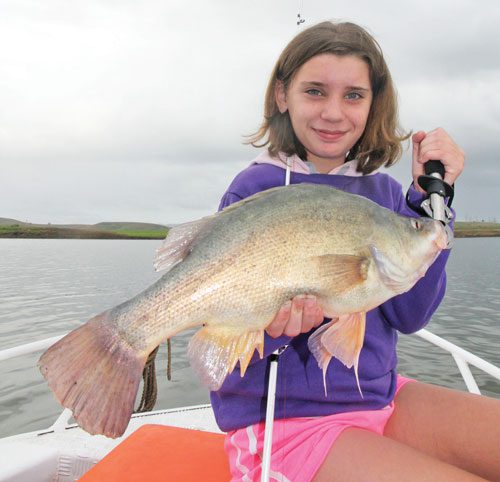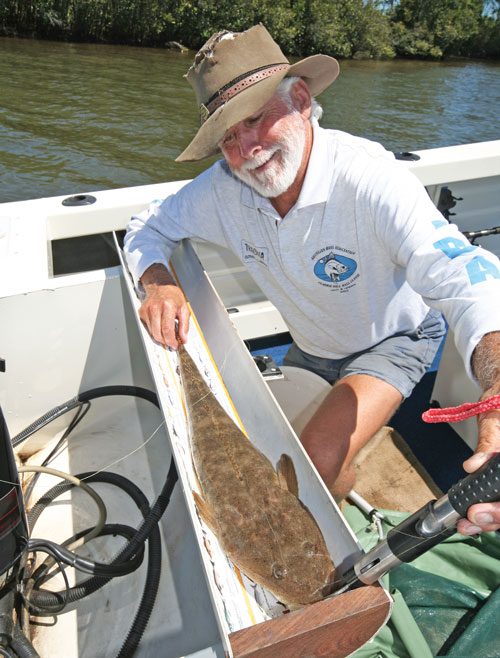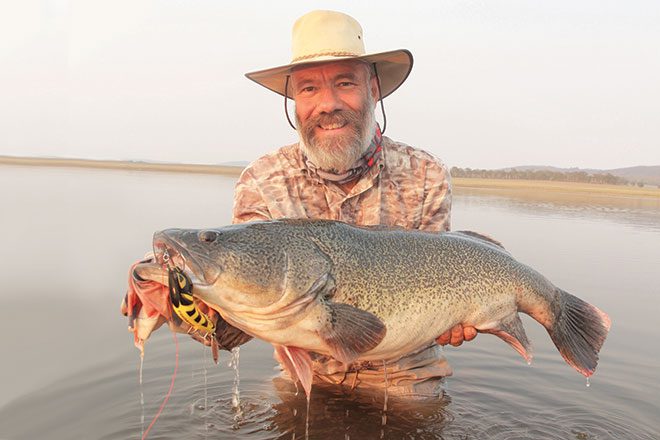I’VE written articles about the correct handling of fish destined for release previously, but the message needs to be delivered to each new generation of anglers to ensure best practices are being used.
Catch and release is becoming a part of the lives of more anglers every day.
This is partly due to the realisation by the general angling public that our fisheries are finite resources.
Catch and release has also been made necessary by the bag limits that apply to many recreational species.
For many years anglers who have scoffed at the idea of releasing fish have been unwittingly engaging in the practice every time they’ve tossed back an undersized fish.
However good our intentions may be, it is of no value releasing fish if they are not going to survive due to incorrect handling.
By adopting a few simple practices, we can greatly increase the survival rate of the fish we all release.

Handling
Probably the easiest step towards ensuring the safe release of fish is to prevent their contact with dry surfaces – this includes your hands.
Fish are covered with a protective slime.
Any contact with dry surfaces can remove this coating, which can lead to fungal infections that in severe cases can be fatal.
To avoid damaging the slime coating, wet your hands before handling fish destined for release, or better still handle them with a wet cloth.
The simple act of dipping your hands over the side or into the yabby bucket before touching the fish can be a life saver.
A fish’s gills are very susceptible to injury.
Never put your fingers into the gills of any fish to be released.
If the gills have been damaged and there is a lot of bleeding, the fish will usually die.
Also, keeping fish out of water for more than a few minutes can dry the gills and lead to the collapse of their gill functions.
Otherwise healthy-looking fish with gill damage when returned to the water will suffocate.
The warmer the water, the less dissolved oxygen it carries.
A fish with slight gill damage and little bleeding that might easily recover in cold water will have greatly reduced chances of survival in warm water.
Fish have evolved to live in a relatively weightless environment under water.
Therefore, their internal organs are not designed to cope with being removed from that watery weightlessness.
A short period of time out of water is not a problem – if they are handled carefully.
Flapping about on the deck or the bank can cause damage, not only to the fish’s slime coating but to internal organs, bones muscle and spinal column.
The bigger and heavier the fish, the more serious the damage is likely to be.
Small fish can be gripped by the lower jaw or placed upside down and cradled in one hand to remove the hook.
Fish up to about 5kg can be balanced on one hand in what is known as the ‘comfort lift’.
This will usually keep the fish immobile for a minute or so – that should be ample time to remove the hook.
When using this method, don’t bring the fish into the boat.

Hold it over the side while removing the hook, so that if the fish struggles, it will fall into the safety of the water, not on to a hard dry deck.
Never lift large fish by the jaw or tail – this will cause damage to the spine and internal organs that will kill the fish.
Yes, the fish you’ve seen released on television have swum away after being held up, suspended by the jaw.
However, just because a fish swims away, does not mean it will survive.
Most big fish having been mishandled will die within 24 hours.
This was proven in the most painful way by staff at a north Queensland barramundi hatchery many years ago.
The practice was to weigh the brood stock by hanging them by the jaw on the scales.
All of their mature barra subsequently died after being handled in this manner.
Once they abandoned the practice, mortality rates plummeted to almost zero.
Always support the weight of the fish by placing a hand under it and holding it horizontally.
If possible, release large fish without lifting them from the water.
Equipment
Use knotless landing nets – either rubber or vinyl, never those cheap knotted nylon mesh ones that are essentially scaler bags on a frame.
Carry wet rags in the boat so that you don’t place fish on carpet, which is abrasive.
Barbless hooks should be used wherever possible – they substantially increase survival rates without decreasing hook-up rates.
A pair of long nose pliers allows unhooking to be a quick and safe process for the angler and the fish.
The golden rules for handling fish destined for release are:
• Keep them wet
• Keep them cool
• Keep them supported
• Keep them out of the water for no longer than you can hold your breath.
 Bush ‘n Beach Fishing Magazine Location reports & tips for fishing, boating, camping, kayaking, 4WDing in Queensland and Northern NSW
Bush ‘n Beach Fishing Magazine Location reports & tips for fishing, boating, camping, kayaking, 4WDing in Queensland and Northern NSW









